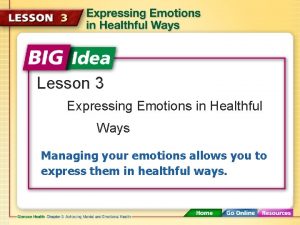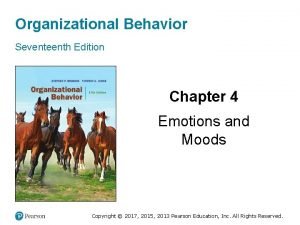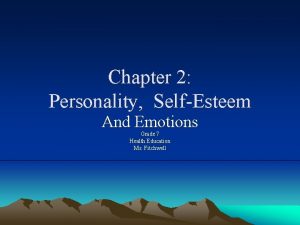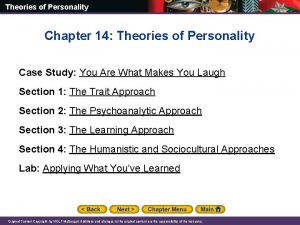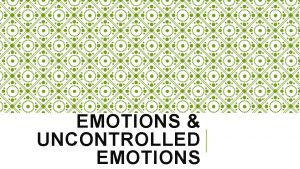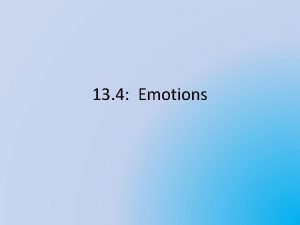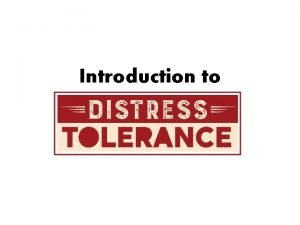CHAPTER 13 THEORIES OF EMOTIONS What Are Emotions






- Slides: 6

CHAPTER 13 THEORIES OF EMOTIONS

What Are Emotions? • Emotions are a mix of physiological arousal (heart pounding), expressive behaviors (quickened pace), and conscious experience including( thoughts and feelings). • Humans are said to be the most emotional species.

When talking about emotions there are three main theories that are often talked about. They are the James Lange Theory, Cannon-Bard Theory, and the Schachter-Singer’s Theory(two-factor theory).

James Lange Theory • This theory is that our experience of emotion is our awareness of our physiological responses to emotion arousing stimuli. • EXAMPLE: You are walking down a dark alley late at night. You hear footsteps behind you and you begin to tremble, your heart beats faster, and your breathing deepens. You notice these physiological changes and interpret them as your body's preparation for a fearful situation. You then experience fear.

Cannon-Bard Theory • The theory that an emotion arousing stimulus simultaneously triggers physiological responses and the subjective experience of emotion. • EXAMPLE: You are walking down a dark alley late at night. You hear footsteps behind you and you begin to tremble, your heart beats faster, and your breathing deepens. At the same time as these physiological changes occur you also experience the emotion of fear.

Schachter-Singer’s Theory(two-factor theory) • Theory that states that to experience emotion one must be physically aroused and cognitively label the arousal. • EXAMPLE: You are walking down a dark alley late at night. You hear footsteps behind you and you begin to tremble, your heart beats faster, and your breathing deepens. Upon noticing this arousal you realize that is comes from the fact that you are walking down a dark alley by yourself. This behavior is dangerous and therefore you feel the emotion of fear.

